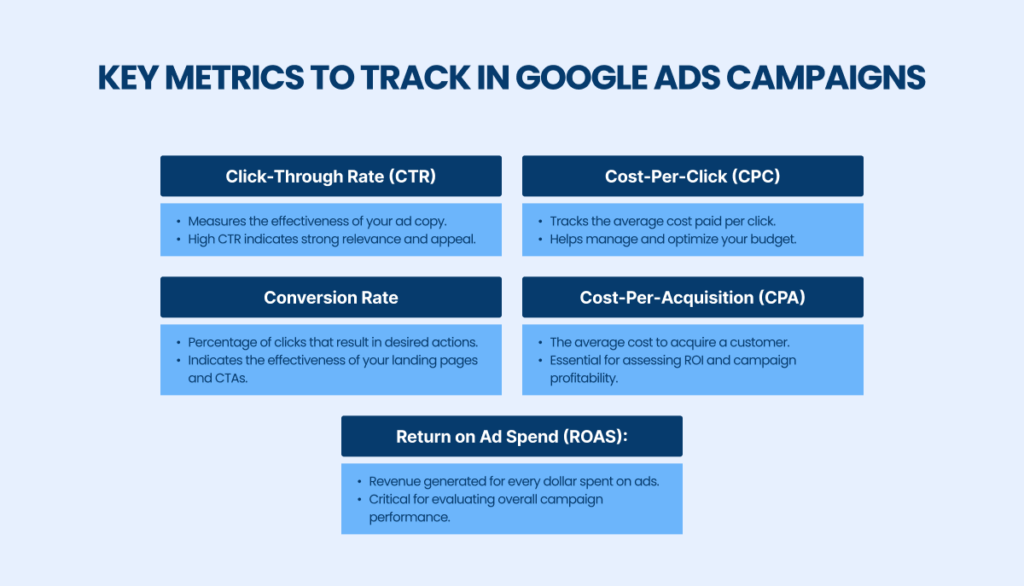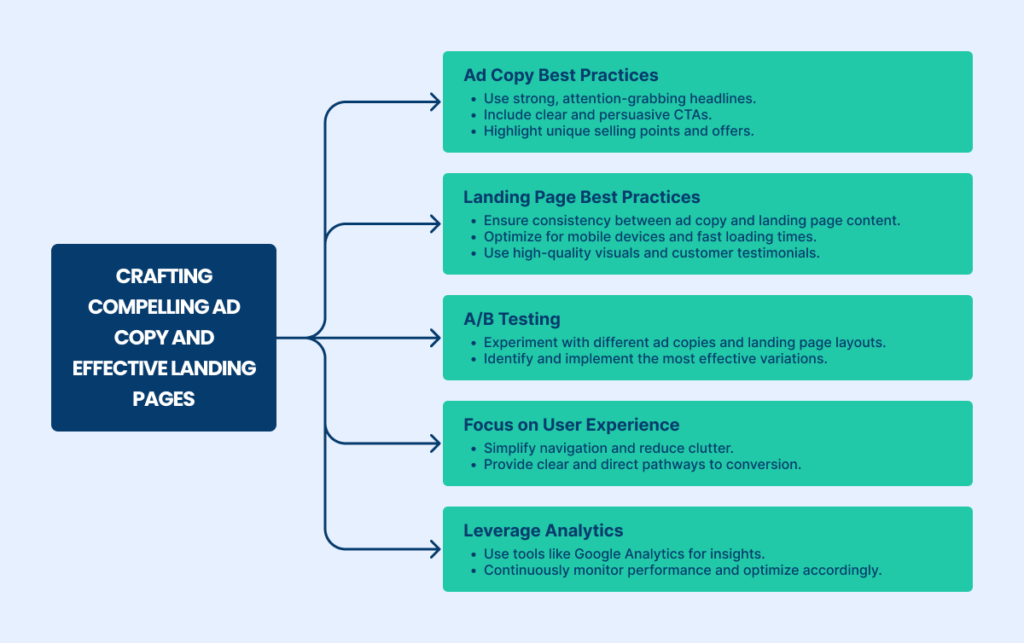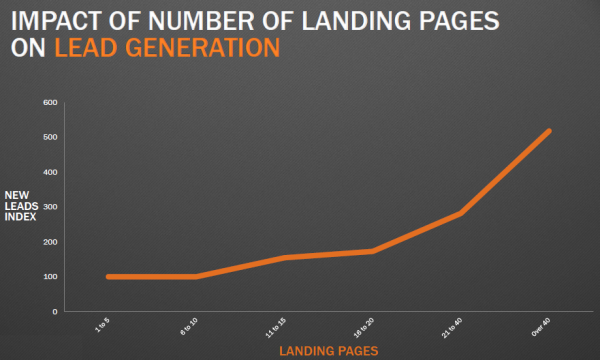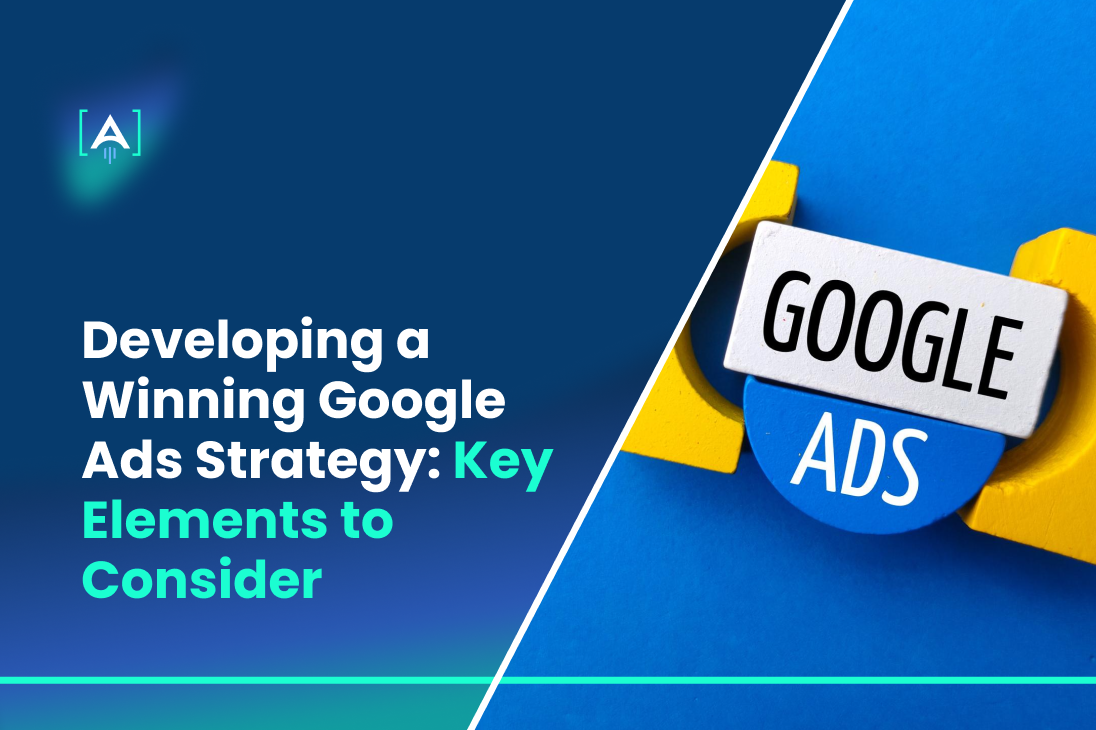Are you maximizing your business’s potential with Google Ads, or are you leaving clicks and conversions on the table?
In today’s competitive digital landscape, leveraging a robust Google Ads strategy is essential for businesses aiming to attract more customers, generate quality leads, and increase sales.
Studies have revealed that for every dollar companies invest in Google Ads, on average, they return $2 in revenue, thus offering the chance of huge returns by investment in it.
However, crafting a winning Google Ads strategy involves more than just setting up a few campaigns and hoping for the best.
This article will explore the key elements defining a successful Google Ads agency approach.
We’ll cover everything from setting clear objectives, conducting effective keyword research, and optimizing your ad campaigns for maximum ROI.
By the end, you’ll have the knowledge and tools needed to implement winning Google ads strategies that meet and exceed your business goals.
Let’s dive into the essentials of developing a successful Google Ads strategy tailored to help you reach your marketing targets and stand out in the digital marketplace.
Understanding Google Ads Basics
Google Ads is a proven platform that consistently delivers results for businesses of all sizes.
Be it raising brand awareness, driving website traffic, or boosting sales, a well-thought-out Google Ads strategy can be the key to boosting your business’s potential.
The fact that 63% of people have clicked on a Google ad is a clear indication of the platform’s effectiveness in reaching and engaging target audiences, instilling confidence in its capabilities.
These are triggered by specific keywords typed in by the user, hence very effective at targeting users looking for a product or service like yours.
- Google Search Ads: These are text-based ads on Google search results pages. They are activated by specific keywords that users type into the search engine, making them highly effective for targeting users looking for products or services like yours. For example, if you’re a local bakery, your ads can appear when someone searches for “best bakery near me.”
- Google Shopping Ad Campaigns: Ideal for e-commerce businesses, these ads show your products directly in the search results with images, prices, and store information. This format allows potential customers to see your products at a glance, increasing the likelihood of clicks and conversions.
- Display Ads: These visual ads appear across the Google Display Network, which includes tons of websites, videos, and apps.
- Video Ads: Leveraging YouTube and Google’s video platform, video ads can be highly engaging and excellent for storytelling. They can appear before, during, or after other videos on YouTube, capturing viewers’ attention.
- App Ads: For businesses with mobile apps, App campaigns smooth the process of promoting your app across Google’s most significant properties, including Search, Play, YouTube, and the Google Display Network.
Each type of ad serves a unique purpose and can be tailored to different stages of the customer journey.
For instance, while Google Search Ads are great for capturing intent-driven traffic, Display Ads are more suited for building brand awareness and retargeting.
This involves selecting the right campaign type and focusing on Google Ads audience targeting budget allocation, and ad creative optimization.
By developing a well-rounded Google Ads strategy, you can make sure that your business reaches the right audience at the right time, maximizing the impact of your advertising efforts.

Setting Clear Objectives
In any Google Ads strategy, defining clear objectives ensures your advertising efforts align with your overall business goals.
By setting specific, measurable, and achievable targets, you can more accurately assess the success of your Google Ads campaigns and make informed decisions about where to allocate your budget and resources.
Defining Campaign Goals
The first step in developing Google Ads strategy is to identify what you want to achieve with your advertising efforts.
Those goals can vary widely depending on your business necessities and the type of products or services you offer. Common objectives include:
- Brand Awareness: If you’re looking to introduce your brand to a broader audience, focusing on display ads and Google search ads can help increase your visibility across the internet.
- Lead Generation: A well-targeted Google ads campaign with effective landing pages and calls-to-action can generate valuable leads for businesses looking to capture potential customer information.
- Sales and Conversions: E-commerce businesses may focus on Google Shopping Ad Campaigns to showcase their products directly in search results, aiming to increase sales and drive conversions.
- Website Traffic: Bringing more visitors to your website can be a crucial objective, particularly if you want to build a customer base or increase engagement with your content.
Aligning Objectives with Business Goals
Ensuring that your Google Ads strategy supports your overall business objectives is essential.
This means aligning your advertising goals with broader business targets, such as increasing market share, entering new markets, or promoting specific products or services.
For instance, if your business aims to launch a new product, your Google ads campaign should focus on reaching audiences most likely interested in that product.
Utilizing Google Ads Features for Objective Setting
Effective use of Google Ads features, such as ad groups and search queries, is beneficial and efficient. It helps you achieve your objectives more efficiently.
For example, organizing your ad groups by specific themes or product categories allows for more precise targeting and relevant ad copy.
Additionally, analyzing search queries can help refine your keyword strategy, ensuring that your ads appear for the most relevant searches.
Implementing a Google Ads competitor analysis can also be vital to setting your objectives.
Understanding how your competitors are positioning their ads and what keywords they are using for targeting can supply you with insights into potential gaps in the market and opportunities for differentiation.
You can create a focused and effective strategy by clearly defining your campaign goals and aligning them with your business objectives.
This approach helps develop a more targeted campaign and ensures that your advertising spend is used efficiently, maximizing your return on investment.
Keyword Research and Selection
Effective keyword research and selection are fundamental components of successful strategies.
The right keywords ensure that your ads reach the most relevant audience to drive more qualified traffic to your website.
In any Google Ads campaign, selecting the right keywords involves understanding your target audience’s search behaviors and aligning your ad content with their needs.
Importance of Keyword Research
Keyword research avails you of terms and phrases used by prospects in search of products or services like yours.
It may further identify relevant keywords, hence ensuring that your ad will appear before an interested audience and increasing click chances for conversion.
Additionally, using more specific or long-tail keywords can help capture more targeted traffic, often leading to higher conversion rates.
Types of Keywords
In any Google Ads campaign, it’s essential to use a mix of different keyword match types to balance reach and relevance:
- Broad Match: This setting allows your ad to appear for a wide range of searches related to your keywords, including synonyms and related terms. While this can increase visibility, it may also attract less relevant traffic.
- Phrase Match: This match type will enable your ads to appear in searches containing the exact phrase or a close variant. It is the middle ground between reach and precision, and it can ensure that your ad is shown to users who are more likely to be interested in the offer.
- Exact Match: Ads will only appear for searches that exactly match your keyword or very close variations. This option provides the highest level of precision, ensuring that your ads are shown only to users searching for the exact terms you’ve specified.
- Negative Keywords: These are keywords for which you don’t want your ads to appear. Including negative keywords helps filter out irrelevant traffic, improving the efficiency of your Google Ads strategies. For example, a luxury watch retailer looking to target high-end watch buyers should include “cheap” in the negative keywords in order to filter out clicks by people asking about budget watches.
Crafting Compelling Ad Copy
Writing great ad copy is part of any good Google Ads strategy. Your ad copy will be a customer’s first interaction with your business, so building messages that really resonate and drive clicks is important.
Compelling ad copy captures attention and communicates the value of your offering, prompting users to take action.
Elements of Effective Ad Copy
Attention-Grabbing Headlines: The headline is arguably the most crucial part of your ad copy. It’s the first thing users see and significantly determines if they will click on your ad.
Use keywords that match the user’s search queries, and ensure the headline is compelling and relevant.
For example, a headline like “Luxury Watches – 50% Off This Summer!” will likely attract attention from users interested in high-end watches.
Persuasive Descriptions: The description details your product or service, highlighting key features and benefits. This section should focus on what sets your offering apart from competitors.
Use concise and persuasive language to communicate the unique value proposition. For instance, “Handcrafted with precision, free shipping on all orders” adds value by emphasizing quality and convenience.
Clear Call-to-Action (CTA): Every ad should have a clear and compelling CTA that tells the user exactly what you want them to do. Whether it’s “Shop Now,” “Learn More,” or “Get a Free Quote,” the CTA should be direct and action-oriented, guiding the user toward the next step.
Best Practices for Ad Copy
To get the maximum of the effectiveness of your Google Ads campaigns, follow these best practices for crafting ad copy:
- Incorporate Keywords: Use the keywords you’ve targeted in your ad copy to ensure relevance and improve ad positioning. This helps align your ad with the user’s search intent and can also enhance your Quality Score, influencing ad rank and cost-per-click.
- Match Ad Copy to User Intent: Align your ad copy with your target audience’s specific needs and desires. For example, if your Google ads campaign targets users looking for “eco-friendly home products,” emphasize the eco-friendly nature of your products in the ad copy.
- A/B Testing: Continuously test different versions of your ad copy to check which performs best. A/B testing lets you experiment with headlines, descriptions, and CTAs to optimize your ads. Use Google ads reporting to analyze the performance metrics of each ad variation, such as click-through rate (CTR) and conversion rate.
- Highlight Offers and Promotions: Special offers, discounts, or promotions can make your ads more attractive. Clearly state these offers in your ad copy to entice users to click. For example, “Exclusive Offer: 20% Off First Purchase” can increase clicks and conversions.
- Leverage Ad Extensions: Ad extensions provide additional information and enhance your ad’s visibility. Extensions like site links, callouts, and structured snippets can give users more reasons to click and explore your offerings further.
Crafting captivating ad copy is an art that combines creativity with a deep knowledge of your audience and market.
By focusing on the elements that matter—attention-grabbing headlines, persuasive descriptions, and clear CTAs—you can develop Google ads strategies that attract clicks and drive meaningful results.
Whether you’re running Google search ads, Google shopping ad campaigns, or other formats, compelling ad copy is critical to standing out in a crowded digital landscape.

How to Craft a Compelling Ad Copy
Creating compelling ad copy is a crucial aspect of effective Google Ads strategies.
Ad copy serves as the initial touchpoint with potential customers, making it essential to craft messages that capture attention and drive action.
The ad copy must be engaging, relevant, and aligned with the user’s search intent to achieve this.
Elements of Effective Ad Copy
- Attention-Grabbing Headlines: The headline is the most visible part of your ad and is vital in attracting users. Incorporating targeted keywords from your Google Ads campaigns, such as “luxury watches” or “eco-friendly home products,” ensures that your ad appears relevant to searchers. For instance, a headline like “Discover Premium Watches – 50% Off Today!” will likely grab the attention of those seeking high-quality timepieces.
- Persuasive Descriptions: The description section provides additional information about your product or service, highlighting key features and benefits. This is where you emphasize what makes your offering unique. For example, “Expertly crafted with sustainable materials, enjoy free shipping on all orders” communicates quality and appeals to environmentally-conscious consumers.
- Clear Call-to-Action (CTA): A strong CTA guides the user toward the desired action, such as “Shop Now,” “Learn More,” or “Get Your Free Guidance.” This directive language encourages immediate action, which is essential for converting clicks into conversions. The CTA should be direct and action-oriented, ensuring users know exactly what to do next.
Incorporating these elements into your Google Ads campaign is essential for creating ads that resonate and connect with your audience.
This relevance is crucial in the Google Ads auction process, as it can lead to better ad placements and lower costs per click.
Moreover, analyzing and refining your ad copy is a continuous process. Utilizing tools like Google Ads reporting, you can track the performance of your ads, including measurements like click-through rates (CTR) and conversion rates.
This data lets you identify which ads are performing well and which need improvement. Regularly updating and optimizing your ad copy ensures that your Google Ads strategies remain effective and aligned with your business goals.
Visual elements, such as infographics, can also increase the appeal of your ads, particularly in Google Shopping Ad Campaigns.
These visuals provide a quick and engaging way to communicate key product features and benefits, making them an essential component of a comprehensive Google Ads strategy.
Designing Effective Landing Pages
Designing effective landing pages is crucial to maximizing the success of your Google Ads campaigns. The landing page is where your ad’s target customers will go after clicking on your ad, playing a very important role in converting those visitors into leads or customers.
Importance of Landing Pages
The primary and important purpose of a landing page is to provide visitors with a seamless and relevant experience that aligns with the ad they clicked on.
Toward whatever action you want the visitor to make, whether purchase, signing up for the newsletter, or asking for more information.
HubSpot reports that businesses with 10 to 15 landing pages experienced an increase in leads by 55%, while those with 40 or more landing pages received 12 times more leads compared to those business pages with only 1 to 5 landing pages.

Source: HubSpot
Effective landing pages are specifically designed to match the message and intent of the Google Ads that direct traffic to them. This consistency helps reinforce the ad’s promise and can increase user trust.
Additionally, landing pages should be optimized for speed and mobile responsiveness. A slow or non-responsive landing page can result in high bounce rates, meaning visitors leave the page without taking any action.
Even though Google research indicates that 53% of mobile site visits are abandoned if a page takes at least three seconds to load.
Thus, making sure that your landing pages load quickly and look great on all devices is needed for the success of your Google ads landing pages.
Visual elements, such as high-quality images or videos, can help illustrate product features and benefits, making the page more engaging. Moreover, including customer testimonials or reviews can add credibility and persuade visitors to trust your brand.
In the context of Google shopping ad campaigns, landing pages should include detailed product descriptions, specifications, and high-resolution images.
These elements provide potential customers with all the information they need to make informed purchasing decisions. For example, a landing page for a tech gadget should include specs, user reviews, and comparisons with similar products.
Additionally, focusing on a clear and straightforward layout enhances the effectiveness of landing pages.
A clutter-free design helps direct visitors’ attention to essential elements like the value proposition and key benefits. The strategic use of color can also underline essential elements such as pricing or special offers, making them stand out.
Displaying logos of well-known brands you’ve collaborated with or certifications from reputable organizations can further enhance trust and encourage visitors to proceed with their purchase or inquiry.
Ultimately, the landing pages should be accessible to all users, including the differently abled. This means readability of content by screen readers, alternative text for images, and clarity of language.
Source : HubSpot
Budgeting for Google Ads Campaigns
Effective budgeting and bidding strategies are yet another thing you must pay attention to when optimizing the performance of your Google Ads campaigns.
Proper budget allocation and bid management ensure that your ads reach the right audience effectively without overspending. Here’s how to optimize your budgeting and bidding strategies:
- Set a Clear Budget: Define your daily and monthly budgets within your Google Ads account to control costs and ensure consistent ad delivery. Allocating budgets across different campaigns, such as Google shopping ad campaigns and Google search ads, allows for focused spending where it’s most impactful.
- Understand Average CPC: Research the average cost-per-click (CPC) for your targeted relevant keywords using tools like Google Keyword Planner. This helps estimate the budget needed to achieve the desired reach and conversion goals. High-competition keywords may require higher bids, impacting your overall budget.
- Implement Smart Bidding Strategies: Use automated bidding strategies like Target CPA (Cost-Per-Acquisition) and Target ROAS (Return on Ad Spend) to optimize bids based on the likelihood of achieving specific objectives. These strategies use machine learning to modify bids in real time, improving your spending efficiency.
- Account for Seasonal Trends: Adjust your budget according to seasonal fluctuations in consumer behavior. For instance, increasing the funding for Google shopping ad campaigns during peak shopping seasons can enhance visibility and sales.
- Regularly Monitor and Adjust Bids: Continuously review the performance of your ad groups and individual ads. Adjust bids based on key performance indicators such as conversion rates and CPC. This helps optimize your budget allocation to the most effective areas.
- Use Bid Adjustments for Specific Criteria: Implement bid adjustments based on location, device type, and time of day. For example, higher bids for mobile traffic might be warranted if data shows higher conversion rates from mobile users.
According to a study from the University of California, businesses can improve their advertising efficiency by up to 30% through effective budgeting and bidding strategies.
These strategies involve setting a budget and continuously optimizing it to match performance data and market conditions.
Common Mistakes in Google Ads Strategies
Even with well-planned strategies, common mistakes can significantly affect the success of your Google Ads campaigns. Here are some pitfalls to avoid:
Ignoring Negative Keywords
One of the most common pitfalls in managing a Google Ads account is the failure to implement negative keywords.
Negative keywords are crucial because they help filter out traffic that is not relevant to your business.
For example, if you’re selling premium products, you might want to exclude search terms like “cheap” or “discount.”
This ensures that your ads are shown to users who are more likely to act, improving the overall quality of your traffic and maximizing your budget’s efficiency.
Inconsistent Messaging Between Ads and Landing Pages
A critical error in many Google ad campaigns is the need for more consistency between the ad content and the landing page.
When users click on an ad that ensures specific features or discounts, they expect to see that information immediately upon landing on your website.
If there’s a disconnect—such as advertising a sale that isn’t prominently displayed on the landing page—users may leave quickly, leading to high bounce rates.
Ensuring that your landing pages reflect your ads’ message and value proposition is essential for maintaining user trust and improving conversion rates.
Overlooking Mobile Optimization
In today’s mobile-first world, not optimizing your ads and landing pages for mobile devices is a significant oversight.
The website should be mobile-friendly. As more and more people make queries on the go with their mobile devices, that means fast loading, easy navigation, and responsiveness of layout to different screen dimensions.
Neglecting mobile optimization can result in missed opportunities and lower conversion rates, especially if a significant portion of your audience is browsing via smartphones or tablets.
Not Utilizing All Available Ad Formats
Restricting your Google Ads efforts to a single ad format, such as text ads, can limit your reach and engagement.
Diversifying your ad formats by including video ads and Google shopping ad campaigns can help you reach a broader audience and engage users more effectively.
Video ads, for example, are particularly effective for compellingly showcasing product features and benefits, while shopping ads can display detailed product information directly in search results.
Failure to Use Remarketing
Remarketing is a powerful tool in any Google ad campaign. It can retarget users who interacted with your website earlier but fell out of your conversion cycle.
You can then retarget these potential customers with appropriate ad creatives, reminding them of what you have in store for them and encouraging them to revisit and make a purchase.
This is especially beneficial in Google shopping ad campaigns, where repeated exposure can help move potential customers further down the sales funnel.
Poor Ad Structure and Organization
A disorganized Google Ads account can lead to inefficient ad spend and suboptimal performance. Creating well-structured ad groups organized by themes, products, or services is essential.
This structure allows for more targeted ads and makes analyzing and optimizing performance easier.
- Disorganized Ad Groups: With proper categorization, ads may reach the intended audience, leading to wasted budget and lower relevance scores.
- Lack of Focus in Ad Campaigns: Mixing different products or services in the same campaign can dilute the message and reduce the effectiveness of the ads.
By avoiding these common mistakes, you can increase the effectiveness of your Google Ads campaigns and make sure that your marketing efforts are as efficient and effective as possible.
Properly managing negative keywords, ensuring consistent messaging, optimizing for mobile, using diverse ad formats, implementing remarketing strategies, and maintaining a well-organized account structure are all critical components of a successful Google Ads strategy.
Unlock Your Business’s Potential with Azarian Growth Agency
To truly excel in the competitive world of digital advertising, it’s crucial to have a well-rounded and strategic approach to your Google Ads campaigns.
From setting a clear budget and selecting the right keywords to crafting compelling ad copy and designing effective landing pages, every detail matters.
For businesses looking to maximize their advertising efforts, partnering with a professional Google Ads agency can make all the difference.
At Azarian Growth Agency, we specialize in creating tailored Google Ads strategies that drive results.
Our team of experts is dedicated to optimizing your ad spend and achieving your business goals, whether it’s increasing brand awareness, generating leads, or boosting sales.
Ready to take your Google Ads campaigns to the next level?
Get Your Free Marketing Plan now and discover how we can help you unlock your business’s full potential.
Let us be your partner in growth, delivering expert insights and strategies that lead to success in the digital landscape.

